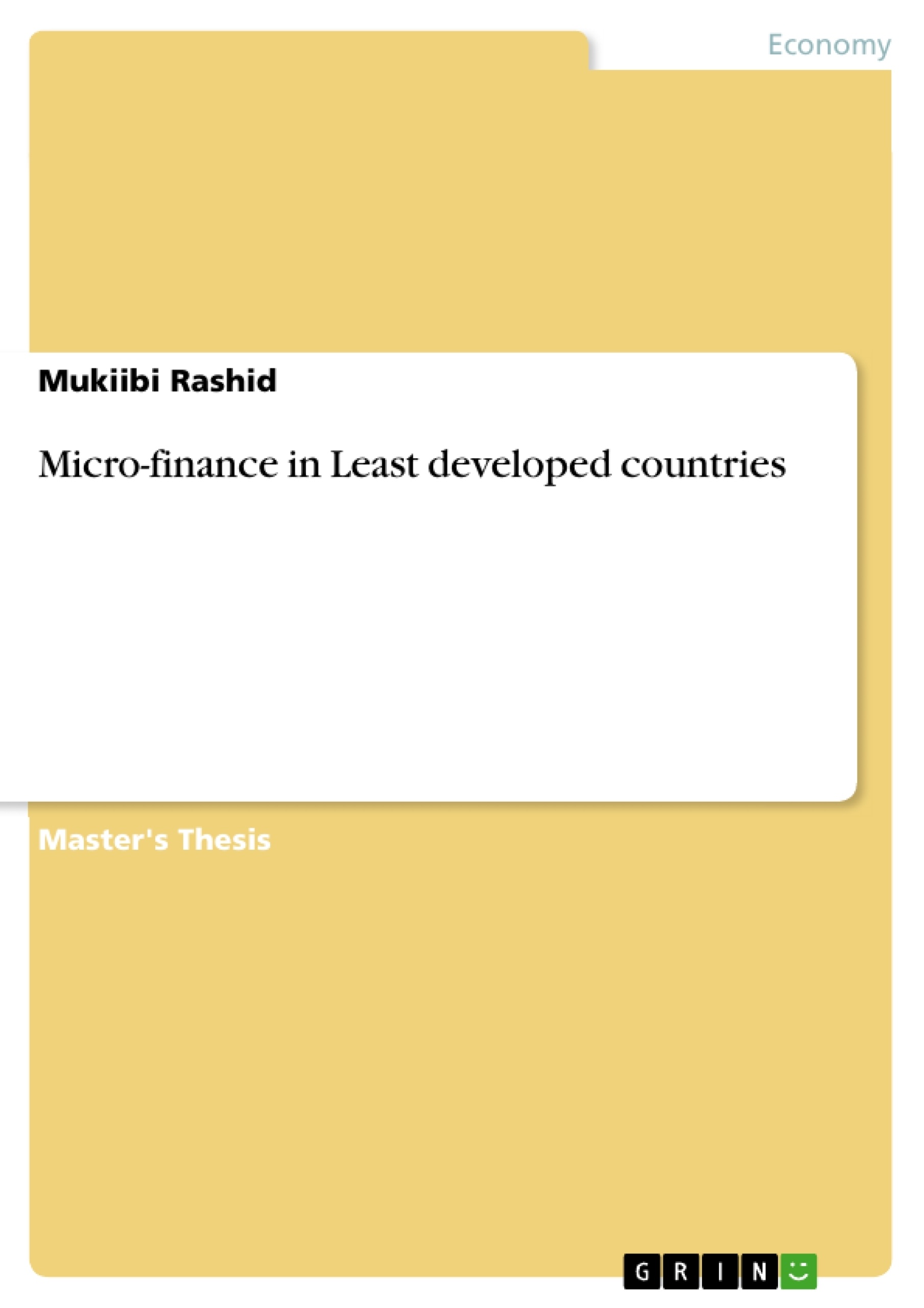Introduced in 1976, modern Micro-finance was a help up for decades as the revolutionary tool to eradicate poverty around the world. Nowadays there is a controversial about the real effect of Micro-finance on the most deprived. This paper is set to examine all the aspects of micro-finance in developing countries and prevent a failure in least developed countries.
It also describes the effect of Micro finance in least developed countries. Indeed, including the poor in the financial system as always been seen as a factor of economic growth and also a tool to fight poverty in least developed countries. In the finance literature, a lot of authors argued the effect of Micro-Finance on the most deprived societies. More debates arose when Micro-Finance has failed in some developing countries such as India and South Africa. This study was designed to analyse the effect of Micro-finance on the poverty rate of selected least developed and developing countries. The study also focuses on the relationship between several variables such as Literacy rate, loan per person, total population and poverty rate.
Table of Contents
- CHAPTER I
- CHAPTER II
- CHAPTER III
- Chapter IV
- Chapter V
- Chapter VI
- Appendices
Objectives and Key Themes
This dissertation examines the effectiveness of microfinance in least developed countries, particularly focusing on the instances where it has failed. The study aims to identify the reasons behind these failures and suggest solutions to prevent similar occurrences in other developing nations. This analysis will be conducted by exploring microfinance's impact on poverty rates, taking into account factors such as literacy rates, loan amounts, and population size.
- The effectiveness of microfinance in eradicating poverty in developing countries.
- The reasons behind the failure of microfinance in certain countries.
- The impact of microfinance on poverty rates in selected least developed and developing countries.
- The relationship between literacy rates, loan amounts, total population, and poverty rates in the context of microfinance.
- The role of financial inclusion and access to financial services in promoting economic growth and reducing poverty.
Chapter Summaries
- CHAPTER I: Introduction: This chapter provides an overview of the history and evolution of microfinance, highlighting its potential to empower low-income households and micro-enterprises. It also discusses the challenges and failures faced by microfinance initiatives in recent years, emphasizing the need for a comprehensive analysis to understand its true impact on poverty reduction.
- CHAPTER II: This chapter delves into the theoretical framework of microfinance and its role in economic development. It examines the different models of microfinance, their strengths and weaknesses, and the potential benefits and risks associated with their implementation.
- CHAPTER III: This chapter presents a detailed analysis of the microfinance landscape in selected least developed countries, focusing on the specific challenges and opportunities faced by these nations. It also investigates the impact of microfinance on poverty reduction in these countries, considering various factors that contribute to or hinder its effectiveness.
- Chapter IV: This chapter examines the impact of microfinance on poverty rates in selected developing countries, comparing and contrasting their experiences with those of least developed countries. It aims to identify common factors that contribute to successful or unsuccessful microfinance programs.
- Chapter V: This chapter analyzes the relationship between various socioeconomic variables, including literacy rates, loan amounts, total population, and poverty rates, in the context of microfinance. It explores how these factors interact and influence the effectiveness of microfinance programs in reducing poverty.
Keywords
The key themes and concepts of this dissertation revolve around microfinance, poverty reduction, financial inclusion, developing countries, least developed countries, economic development, impact evaluation, literacy rates, loan amounts, total population, poverty rates, and the potential benefits and risks of microfinance programs.
- Quote paper
- Mukiibi Rashid (Author), 2016, Micro-finance in Least developed countries, Munich, GRIN Verlag, https://www.grin.com/document/386933



